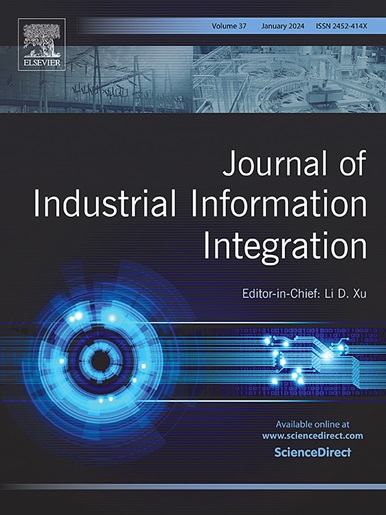Sustainable supply chain network design: Integrating risk management, resilient multimodal transportation, and production strategy
IF 10.4
1区 计算机科学
Q1 COMPUTER SCIENCE, INTERDISCIPLINARY APPLICATIONS
引用次数: 0
Abstract
This study presents a novel advancement in sustainable supply chain network design (SSCND) by incorporating risk management, resilience, and production strategies within a multi-modal transportation framework. Focusing on the distribution, production, and inventory (DPI) triad, the literature on the SSCND emphasizes the need for strategic alignment to create a resilient supply chain capable of mitigating risks in multimodal transport. To achieve this, we develop a novel multi-objective mixed-integer programming (MOMIP) model customized to the SSCND aimed at maximizing profit, minimizing transportation time, and reducing environmental impacts. The model is solved using a specialized goal programming approach, ensuring that no objective is compromised at the expense of others. A hybrid solution methodology, combining a local search algorithm with machine learning predictive models, is introduced to navigate the complexity of the MOMIP model efficiently. The model’s validity is confirmed through real-world data from the Iranian chemicals industry, and the proposed algorithm’s performance is tested. On average, the algorithm achieves an optimality gap of <3 %, with a gap of 2.67 % for profit maximization, 1.63 % for transportation time reduction, and 0.71 % for minimizing environmental impact, demonstrating its efficiency and reliability. Sensitivity analyses further highlight the significant impact of risks including environmental, policy, and operational on transportation and financial outcomes, showing up to a 12 % decrease in profits due to environmental risks alone. These findings underscore the robustness of the model and its applicability in complex, real-world industrial scenarios, making valuable contributions to the literature on sustainable supply chain management, risk mitigation, and multimodal transportation optimization.
可持续供应链网络设计:整合风险管理、弹性多式联运和生产策略
本研究通过在多式联运框架内整合风险管理、弹性和生产策略,提出了可持续供应链网络设计(SSCND)的新进展。关于SSCND的文献着重于分销、生产和库存(DPI)三位一体,强调需要进行战略协调,以创建一个能够降低多式联运风险的弹性供应链。为了实现这一目标,我们开发了一种针对SSCND定制的新型多目标混合整数规划(MOMIP)模型,旨在最大化利润,最小化运输时间,并减少对环境的影响。该模型使用一种专门的目标规划方法来解决,确保不以牺牲其他目标为代价来损害目标。引入了一种混合解决方法,将局部搜索算法与机器学习预测模型相结合,以有效地导航MOMIP模型的复杂性。通过伊朗化工行业的实际数据验证了模型的有效性,并对所提算法的性能进行了测试。平均而言,算法的最优性差距小于3%,其中利润最大化的差距为2.67%,运输时间减少的差距为1.63%,环境影响最小化的差距为0.71%,证明了算法的效率和可靠性。敏感性分析进一步强调了包括环境、政策和运营在内的风险对运输和财务结果的重大影响,仅环境风险就会导致利润减少12%。这些发现强调了该模型的稳健性及其在复杂的现实工业场景中的适用性,为可持续供应链管理、风险缓解和多式联运优化方面的文献做出了宝贵贡献。
本文章由计算机程序翻译,如有差异,请以英文原文为准。
求助全文
约1分钟内获得全文
求助全文
来源期刊

Journal of Industrial Information Integration
Decision Sciences-Information Systems and Management
CiteScore
22.30
自引率
13.40%
发文量
100
期刊介绍:
The Journal of Industrial Information Integration focuses on the industry's transition towards industrial integration and informatization, covering not only hardware and software but also information integration. It serves as a platform for promoting advances in industrial information integration, addressing challenges, issues, and solutions in an interdisciplinary forum for researchers, practitioners, and policy makers.
The Journal of Industrial Information Integration welcomes papers on foundational, technical, and practical aspects of industrial information integration, emphasizing the complex and cross-disciplinary topics that arise in industrial integration. Techniques from mathematical science, computer science, computer engineering, electrical and electronic engineering, manufacturing engineering, and engineering management are crucial in this context.
 求助内容:
求助内容: 应助结果提醒方式:
应助结果提醒方式:


